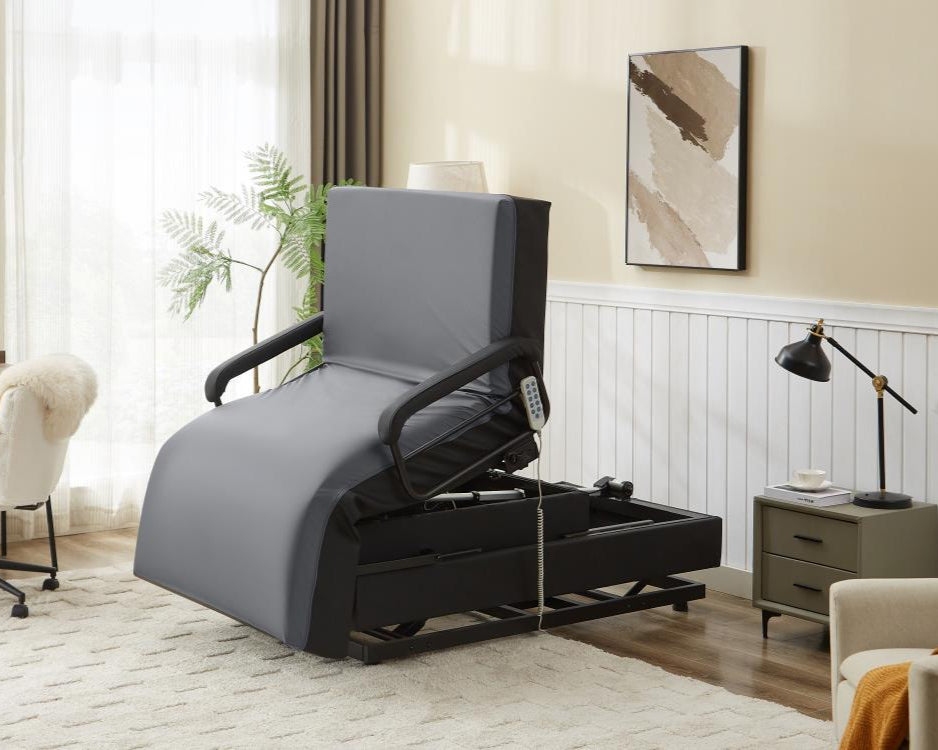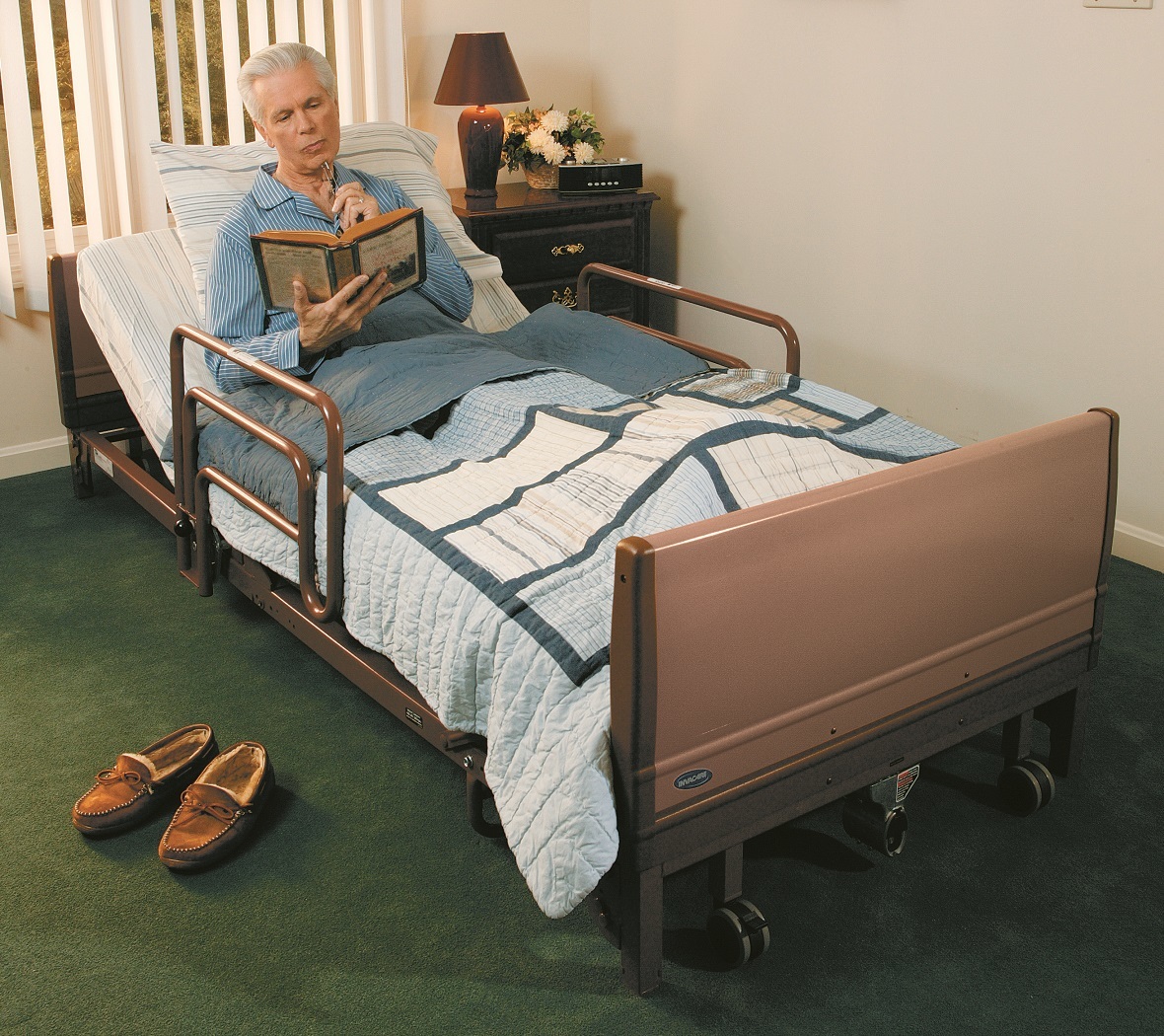Hospital Beds For Home Use Can Be Fun For Anyone
Hospital Beds For Home Use Can Be Fun For Anyone
Blog Article
Hospital Beds For Home Use Things To Know Before You Get This
Table of ContentsEverything about Hospital Beds For Home UseSome Of Hospital Beds For Home UseAll about Hospital Beds For Home UseOur Hospital Beds For Home Use PDFsWhat Does Hospital Beds For Home Use Mean?About Hospital Beds For Home UseWhat Does Hospital Beds For Home Use Do?
There are 3 major kinds of health center beds: guidebook, semi-electric, and fully-electric. Even more kinds of clinical beds exist and they are provided below. These beds make use of hand cranks to adjust the bed's height and elevate and reduce the head and the foot. Hand cranks are commonly discovered at the foot of the bed and call for an individual that is literally efficient in operating.
Semi-electric beds have an electric motor to elevate and decrease the head and foot parts of the bed (hospital beds for home use). Full-electric beds have an electric motor that can increase the head and foot sections of the bed as well as the whole elevation and positioning of the bed.
The Hospital Beds For Home Use PDFs
There are numerous types of healthcare facility beds, each designed to fulfill specific client requirements. Here are some usual types: This is the most usual type of health center bed, designed for basic medical usage.
Lower to the ground than a basic bed. This type of bed is designed for bigger individuals, with a wider framework and higher weight ability than a standard bed.
This kind of bed is developed for critically unwell people that call for open surveillance and specialized clinical devices such as ventilators and infusion pumps. This kind of bed is created for usage throughout labor and shipment, with adjustable placements and functions to support the mom and baby during the birth procedure.
The Ultimate Guide To Hospital Beds For Home Use
Multiple function and the accessories perform broadening grip to various components of the vertebra and the extremities without relocating the human body. These are simply a few examples of the sorts of healthcare facility beds readily available. The specific type of bed utilized will certainly rely on the person's condition, clinical needs, and other aspects.
Below is the important things you require to understand. A one-function hospital bed is a clinical bed that enables a patient to relocate just the head or foot section up or down. A 2 feature hospital bed commonly refers to a type of medical bed that has 2 adjustable features to help people in healthcare facilities or care facilities.

What Does Hospital Beds For Home Use Do?
A 7-function ICU bed is a type of medical bed that offers several adjustable functions to support critically unwell patients in a critical care unit (ICU) (hospital beds for home use). The seven features normally consist of: Back-rest adjustment: The backrest can be adapted to different angles to assist the individual rest up or relax comfortably
Elevation adjustment: The bed can be elevated or lowered to make it less complicated for people to enter and out of bed, and for caregivers to give treatment. Trendelenburg setting: The entire bed can be tilted to promote blood flow and circulation in the body. Reverse Trendelenburg placement: The bed can also be tilted in the contrary direction to advertise blood circulation and flow in the upper body.
While even more cost effective than electric designs, these beds call for exertion for adjustments. The primary advantages of hands-on beds are their cost and integrity, as they don't rely upon electricity. Nonetheless, the need for manual effort can be a restriction in scenarios where fast modifications are needed or where caregivers encounter physical obstacles.
The Hospital Beds For Home Use PDFs
They are appropriate for people that Home Page need marginal rearranging for convenience or medical needs. Semi-electric healthcare facility beds offer a balance of guidebook and electrical controls. The head moved here and foot sections are typically readjusted with electric controls, while the elevation is changed by hand. These beds give an excellent happy medium in between guidebook and completely electric options, offering simplicity of use without the full expense of electric designs.
Semi-electric beds are well-suited for patients who need modest adjustments to the head and foot sections yet can manage without frequent height changes. This makes them an economical solution for those seeking convenience and benefit without the demand for continuous repositioning. Fully electric healthcare facility beds include electrical controls for smooth adjustments to the height, head, and foot areas.
Specialized hospital beds, such as ICU beds, long-term care beds, and bariatric beds, are very carefully made to attend to particular clinical requirements. These beds supply customized take care of varied client groups, boosting both end results and convenience. In the adhering to sections, we will discover the primary types of specialized medical facility beds, outlining their specific benefits and applications.
With years of experience in manufacturing electrical linear actuators - hospital beds for home use and close partnership with the healthcare sector, TiMOTION is well-positioned to supply trustworthy healthcare remedies. Our vertically incorporated business manages every step of the production procedure, from layout to actuator assembly, ensuring we provide remarkable value and personalized remedies customized to your details needs
8 Simple Techniques For Hospital Beds For Home Use

To find out more regarding incorporating these modern technologies right into your products, contact us today. Further reading:.
Information is sourced from the Medicare Cost Record.

Hospital Beds For Home Use - Questions
A healthcare facility bed is a bed designed particularly for medical purposes. It is not just an area for individuals to relax, but also a platform for clinical operations. Unlike ordinary home beds, healthcare facility beds usually have flexible functions, which can help with clinical staff to make numerous adjustments according to the requirements of clients, such as transforming the elevation, disposition, and assistance angle of the back and legs of the bed.
Report this page